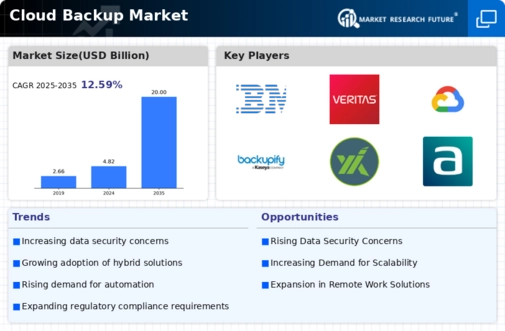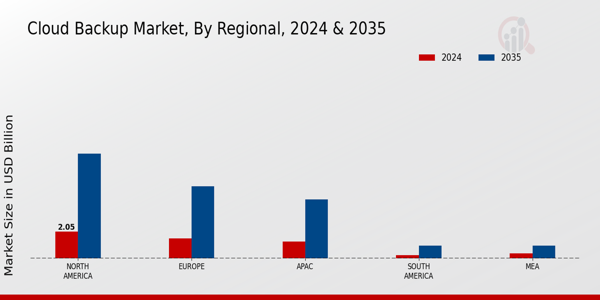Market Trends
Key Emerging Trends in the Cloud Backup Market
These trends highlight the changing needs and tastes of businesses in this information age, as well as their impact on cloud backup market. A big trend is the growing use of AI and ML in cloud backup solutions. The amount and complexity of data continue to increase, and simultaneously AI-based applications are coming into use in backup systems so as to improve the efficiency with which data is managed. These technologies make it possible to do intelligent categorization of data, predictive analysis of potential problems and automatic optimization for backup processes. This is an industry that not only provides storage but smart, proactive data management solutions. The integration of AI and ML testifies to this commitment.
Another notable trend is the increasing focus on ransomware protection and recovery functions in cloud backup products. Now that cyber threats are becoming more and more complex, businesses put a high premium on impenetrable security measures to protect their data from ransomware attacks. As a result, cloud backup providers are increasingly incorporating advanced security features--such as real-time enemy detection and encryption, along with secure offline repositories. Speed in recovering data is becoming a separating factor for businesses reevaluating cloud backup services, and this combined with the increasing threat of ransomware has made such products enormously popular.
As a solution to data integrity and transparency issues, the combination of cloud backup solutions with blockchain technology is becoming growing trend. With blockchain, you have a distributed and immutable ledger. So data backups are both verifiable and validated. This development is particularly applicable to industries with a high level of compliance requirements, in which immutable data records are absolutely vital. With blockchain picking up steam in cloud backup, it holds great promise for changing the way businesses protect their most valuable data assets by assuring integrity and trustworthiness. In addition, the development of edge computing is affecting trends in cloud backup. Edge computing processes data closer to the point of origin rather than relying on centralized cloud servers alone. An example of how this decentralized approach is becoming trendy in business now that companies understand the need for faster data processing and shorter latency, even with applications such as IoT devices.



















Leave a Comment